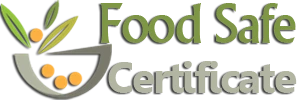Norovirus infection is caused by a highly contagious virus called norovirus or Norwalk-like virus. It is often called stomach flu or viral gastroenteritis and is considered a type of food poisoning. Norovirus is said to be one of the most common, if not the most, leading causes of gastroenteritis, wherein the stomach and/ or intestines become inflamed. There are millions of reported cases each year. Anyone is at risk of getting norovirus infection, but young children, older adults, and individuals with chronic diseases are at greatest risks of acquiring the infection. Moreover, an individual can have norovirus illness several times in a person’s life.
Causes of Norovirus Infection
Norovirus can be easily transmitted from an infected person to another. Moreover, norovirus infection can also be acquired from eating food and water that is contaminated during processing or handling. There are several ways to obtain norovirus infection:
- Ingesting food or water contaminated with infected feces or fluids
- Eating foods prepared by infected workers
- Touching contaminated surfaces
- Direct contact with vomit or stool of an infected person
High-risk Foods for Norovirus Infection
Although all foods are at risk for carrying norovirus infection, there are certain foods that are considered at a greater risk for carrying norovirus infection. Specifically, the following foods are considered high-risk foods for norovirus infection:
- Shellfish
- Ready-to-eat foods, especially salads, sandwiches, ice, cookies or fruit
Signs and Symptoms of Norovirus Infection
The incubation period for norovirus infection is typically twelve to forty eight hours. This is the time between the exposure to the norovirus and the appearance of the first signs and symptoms. Most cases last from one to three days, however, in slightly more severe cases that result to hospitalization, it may last from four to six days. The following are the signs and symptoms of norovirus infection:
- Nausea
- Vomiting (more common children)
- Diarrhoea that is typically not bloody but watery (more common in adults)
- Stomach pain
- Fever
- Headaches
- Body aches
- Symptoms of dehydration: decreased urination that is usually dark yellow in colour, dry mouth and throat, and feeling dizzy when standing up
First Aid Management for Norovirus Infection
There is no specific treatment used to treat individuals with a norovirus

infection. It cannot be treated with antibiotics because it is a viral infection. However, the following tips are generally recommended in case an individual has a norovirus infection:
- Drink eight to ten glasses of clear fluids, preferably water, to replace fluids lost. And every time there is a loose bowel movement, drink at least one cup of liquid.
- Take plenty of rest.
- Instead of eating three big meals, eat small meals instead.
- Put some salty food in the diet, such as pretzels, soup, and sports drinks. Eat foods high in potassium, such as bananas, potatoes without the skin and fruit juices with plenty of water.
- It is not ideal to take anti-diarrheal medications as it may cause the infection to last longer.
Disclaimer: This article does not provide medical advice and should not be substituted for formal training. The information given should not be used for self-diagnosis. Seek medical attention when necessary. It is important to recognise potential medical emergencies at all times to avoid complications from developing. To learn more about how to manage norovirus infections, enrol in First Aid Courses and CPR Courses with Red Cross Training.
Online Sources:
http://www.cdc.gov/norovirus/about/overview.html
http://www.foodsafety.gov/poisoning/causes/bacteriaviruses/norovirus/

